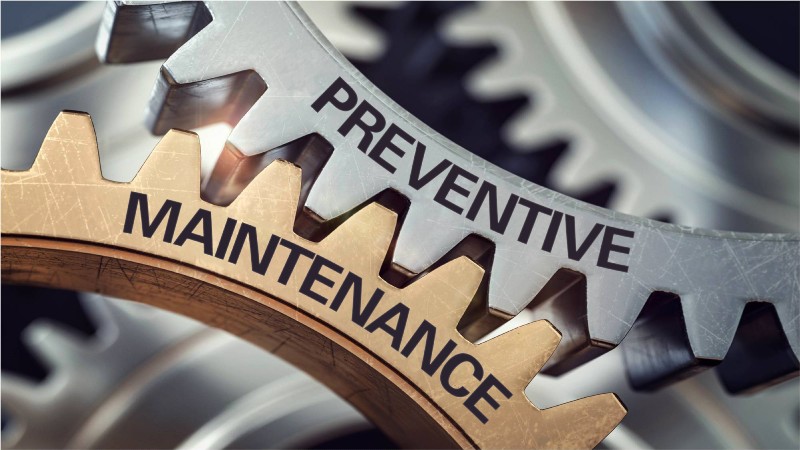In the traditional times particular, the machines were of a simple nature, which is why there were few defects. And there were also no empirical values as to when it makes sense to carry out maintenance or inspection. But this maintenance strategy required little maintenance, as something is only done when the machine stops due to a defect or malfunction. But of course this also has decisive disadvantages. Reactive maintenance is a maintenance strategy in which maintenance measures are only carried out when something is defective or the machine comes to a standstill. Only those repair measures are carried out that are necessary for the machine to work again.
What is Preventive Maintenance
The preventive maintenance is a maintenance strategy in which maintenance measures are carried out at certain intervals. The intervals can be time-dependent, number-dependent or usage-dependent (depending on the type of parts). It is divided into the areas of inspection, maintenance and repair. During the inspection, visual checks or simple tests are carried out at defined intervals to check whether the settings and wear are still within the tolerance range. Typical for this are whether the belts are still well tensioned or guardrails can guarantee the correct spacing, and whether the stops are still in the correct position. Also, whether there is a oil leak somewhere where it has no business, because a defect could also be looming here. A typical running or production noises are also a possible indication of imminent failures. A lot of experience is required for this in order to define the correct intervals for preventive maintenance.
What is Maintenance –
Maintenance is understood to mean regular maintenance measures that are intended to ensure that the equipment works without malfunctions. The number of hours worked or the number of items produced are often the basis for this. Typical for this is, for example, an oil change or cleaning measures or lubrication of bearings or drive shafts after the corresponding operating hours. The manufacturer often has a maintenance plan for this. The goal for maintenance is that the machine or system can be used for as long as possible with full operational safety for the personnel and the optimal quality.
Worst Cases of Maintenance –
A repair is necessary if, despite the best inspection and maintenance, something has gone out of service. Then the machine comes to a standstill and has to be repaired. This is the worst case of preventive maintenance because there are no preventive measures for it, at least not today. As is so often the case, this is the case when the company needs it least. Then the entire production process is massively disrupted and customer appointments are in great danger. This is the worst case of all maintenance measures, or Instandhaltungskonzept as it always occurs unplanned and therefore usually causes high costs.
Preventive Maintenance –
Preventive maintenance is currently the most widespread maintenance strategy. It has also proven itself well over many years, although it still has many weak points. So is preventive maintenance the measure of all things, it couldn’t be better. Until recently, this was the motto, but technology doesn’t stop there. This is especially true in the field of software for artificial intelligence. This opens doors that were previously tightly closed. A new maintenance strategy was born. Predictive maintenance will definitely replace preventive maintenance strategy in the next few years.
Advantages of Maintenance Strategy –
The advantages of this maintenance strategy are that, before something fails, you get information about where a failure is looming and where it can be expected in the foreseeable future. So you can order the required spare part and carry out a planned maintenance measure. This is best done when the machine is not being used or needed. The mathematically maximum possible capacity of the machine comes closer and closer and thus optimizes your production capacities considerably. The wear parts are also used up to near the wear limit, thus saving further costs. Consequential costs are also saved largely because the component that will soon break.
Maintenance Strategy –
The precondition for the maintenance strategy is that the machines are networked, i.e. all machines provide their data for storage in the database. Usually this is done with different protocol. Newer machines usually already have such a controller that enables the interface to be configured as OPC UA (as a server when data is sent and as a client when data is received) and thus to make the data available for the database. In the case of older machines, sensors may have to be retrofitted, which are then converted into the OPC UA format with the help of a gateway and thus also enter the database as data. The transparency of the weak points of the machines is also getting better and better.



